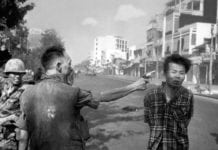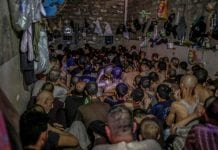Self-immolation as an act of protest is nothing new in history. Yet, it only entered Western consciousness during the Vietnam War, when Western journalists first recorded and photographed such acts.
This led to widespread confusion and mixed emotions towards the people who were willing to resort to such extraordinary measures.
This phenomenon is still not understood in the West, though acts of self-immolation have now been taking place even in the largest cities in the US, and reports of self-immolating Buddhist monks from China are becoming almost business as usual.
Buddhist monks were also at the center of the stage when news of the first notable incident reached the West.
Why do they do that?
On June 11, 1963 an elderly Buddhist monk called Thich Quang Duc walked to the center of Saigon, Vietnam, calmly sat down in the lotus position as his assistants poured gasoline all over him, then set himself on fire.
His act was a desperate protest against the actions of the South Vietnamese government, which oppressed Buddhists and favored Catholicism.
One of the witnesses to the incident was American journalist David Halberstam, who conveyed the first descriptions of self-immolation in modern times to a wider audience in the West.
Halberstam was shocked by the witnesses’ emotions and reactions to the happening, as locals were openly admiring the monk’s bravery and calmness.
Halberstam clearly did not share the views of the local people, as he later wrote:
“Flames were coming from a human being. His body was slowly withering and shriveling up, his head blackening and charring. In the air was the smell of burning flesh. I was too shocked to cry, too confused to take notes or ask questions, too bewildered to even think.”
As mentioned, self-immolation is nothing new, and by the time of Vietnam War it already had a history that was thousands of years old in India and the Far East.
But how does self-immolation look to a Westerner, for whom this practice has never been common?
According to Anglo-Italian sociologist Diego Gambetta, who has closely studied different suicide missions, self-immolation is an extreme form of protest, a suicidal attack on behalf of a collective cause.
Quang Duc
However, unlike a suicidal attack, in the case of self-immolation there is no intention to cause physical harm or material damage to anyone else.
Notably, self-immolation has to be a public act. In case with a Quang Duc, he and his aids went for maximum publicity. Foreign journalists were alerted before the incident and other monks made sure that Quang Duc´s final declaration was available in English at the time of his death.
Not in my backyard!
However, this kind of desperate act has never quite gone over well in the West. There have been attempts to find psychological and religious explanations, but none have been comprehensive or conclusive.
The wider perception is still confusion, which only grows when acts of self-immolation happen in the Western world itself.
“The self-burning of Vietnamese Buddhist monks in 1963 is somehow difficult for the Western Christian conscience to understand”, acknowledged Thich Nhat Hanh, a monk who studied in the US in 1967.
In an open letter to Martin Luther King, who had condemned self-immolation acts, now well-known peace activist Hanh tried to explain the difference between self-destruction and self-sacrifice for the sake of others.
Though it is not clear if his message ever got through to a Western audience, Christians soon turned to self-immolation acts themselves. – GBTimes




































